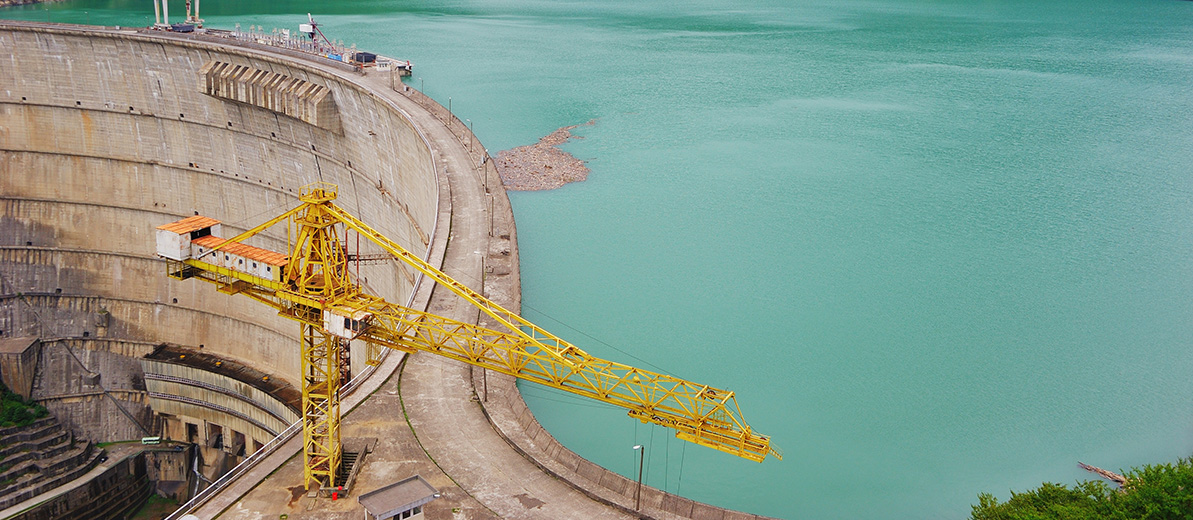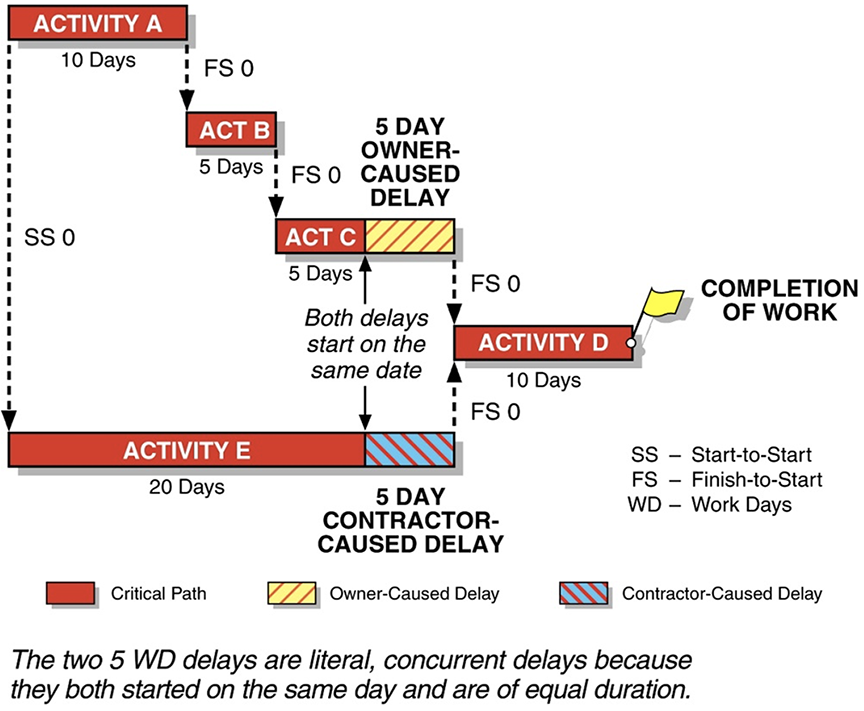
April 17, 2023
Concurrent Path Delays and Literal Concurrency
This is the first blog post in a two-part series discussing concurrency. This post defines concurrent delays and literal concurrency; the next will explore functional concurrency.
Concurrent Critical Path Delays
Concurrent critical path delays are commonly called competing delays, i.e., delay impacts occurring at the same time as other delay impacts. On construction projects, concurrent delays are typically parallel contractor and owner delays that could independently delay the overall critical path within the same analysis window.1 Unfortunately, concurrent delay situations are not clear-cut. They are often complex, controversial, and contentious, leading to disputes between contracting parties.
A contractor should identify, quantify, and apportion concurrent delays impacting the critical path. Typically, concurrent critical path delays are offsetting, and a contractor may receive a time extension from the owner or relief from liquidated damage assessments. Concurrent delays are classified as either literal or functional.
Literal Concurrency
When concurrent critical path delays start and finish at the exact same time, they are defined as true or literal concurrency.2 Figure 1 illustrates such concurrency.
Figure 1: Literal Concurrency

Figure 1 shows two critical paths to the start of Activity D. The first driving critical path is activity path A-B-C, where a five-day, owner-caused delay in Activity C directly delayed the start of successor Activity D. The second parallel critical path goes through Activity E, which experienced a parallel five-day contractor delay that also directly delayed the start of Activity D. The delays on Activity C and Activity E both occurred at the exact same time, and they both had the same delaying impact to the start of Activity D.
Thus, the delays on Activity C and Activity E are literally concurrent, and they equally offset each other. Owners would typically grant a contractor a five-day time extension to the completion of Activity D due to the owner-caused delay in the critical path Activity C. However, the owner would not typically allow the contractor to recover its time-related delay costs because of the five-day concurrent delay that the contractor caused in Activity E.
1 “Analysis of Concurrent Delay on Construction Claims,” by Richard J. Long, P.E., P.Eng., p. 2.
2 AACE® International Recommended Practice 29R-03, “Forensic Schedule Analysis,” pp. 104–106 of 134.
ADDITIONAL RESOURCES

Blog
Discover industry insights on construction disputes and claims, project management, risk analysis, and more.
MORE

Articles
Articles by our engineering and construction claims experts cover topics ranging from acceleration to why claims occur.
MORE

Publications
We are committed to sharing industry knowledge through publication of our books and presentations.
MORE
RECOMMENDED READS
Analysis of Concurrent Delay on Construction Claims
This article explores concurrent delay, including the treatment of concurrent delay in various legal jurisdictions, practical guidelines, and more.
READ
Analysis of Concurrent and Pacing Delays
This article analyzes pacing relative to owner-caused delays and explains how to demonstrate that pacing is not a concurrent contractor-caused delay.
READ
Types of Delay
Delays in construction contracts are usually categorized as one of three types. This blog post defines each type, with examples.
READ

